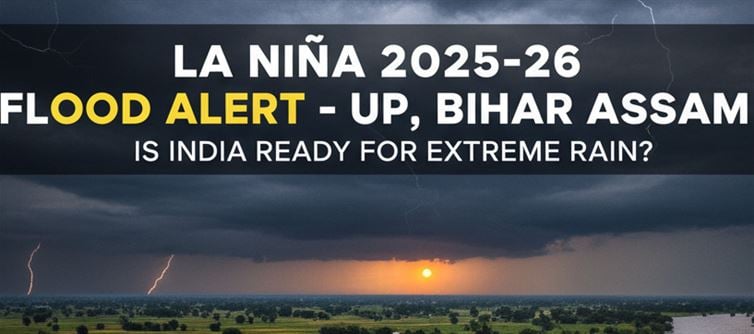
⚠️ La Niña india 2025-26: Double-Edged Sword for Agriculture & Flood Risk Rises ⚠️
IMD ALERT: Monsoon Boost Hides Major Flood and Crop Damage Fears
The India Meteorological Department (IMD) has issued a critical La Niña india 2025-26 forecast, signaling a high probability of this powerful climate phenomenon developing by late 2025 (October–December, with a 71% chance) and persisting into early 2026. While La Niña traditionally boosts India's monsoon rainfall, a critical factor for food security and the Kharif (summer) crop, the current outlook is fraught with significant risks.
.jpg)
Heavy Rains & Extreme Weather Spike
Meteorologists and climate scientists are sounding an alarm: the amplified rainfall means heightened risk of severe flooding, particularly in the northern and eastern plains. States like Uttar Pradesh, Bihar, and Assam must urgently prepare for potential flash floods and widespread waterlogging. Furthermore, the forecast increases the cyclone risk in the Bay of Bengal, threatening coastal livelihoods and infrastructure. This spike in extreme weather events is strongly linked by experts to the compounding effects of La Niña and global warming.
Critical Crop Risk & Farmer Advisory
Farmers searching for "La Niña india 2025 impact on agriculture" and "monsoon prediction La Niña 2025-26" face a complex planning scenario. Abundant water is a boon for major Kharif crops like paddy (rice) and sugarcane. However, excessive and intense rainfall could lead to crop damage from waterlogging—a massive threat to the Rabi (winter) season’s later-sown crops, especially wheat and maize. Studies suggest La Niña also typically brings a harsher, colder winter to North india, with prolonged cold waves and frost, which would further impact the growth of winter crops. The central and state governments are expected to release emergency crop advisories and flood preparedness measures immediately to help farmers adopt flood-resilient varieties and adjust sowing schedules.




 click and follow Indiaherald WhatsApp channel
click and follow Indiaherald WhatsApp channel